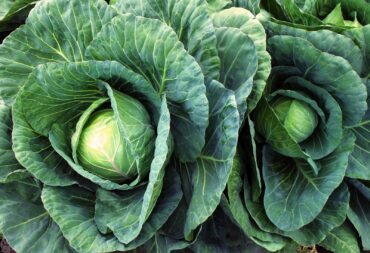 Most of us know about superfoods –– those berries and veggies that bulk up our immune systems to keep us healthy. But how can you grow a superfood garden?
Most of us know about superfoods –– those berries and veggies that bulk up our immune systems to keep us healthy. But how can you grow a superfood garden?
We’ll show you.
What are Superfoods?
Harvard University and the Mayo Clinic describe superfoods as being rich in vitamins, antioxidants, fiber, minerals, healthy fats and flavonoids. The latter comes from plants, which have inflammatory- and cancer-fighting elements.
Berries, fish, leafy greens, nuts, olive oil, whole grains, yogurt, cruciferous vegetables, legumes and tomatoes are the 10 superfoods.
To grow your superfood garden, start with leafy greens, which can be grown in your backyard, in containers or your neighborhood community garden.
Leafy greens
Leafy greens include lettuces, arugula, collards, mustard, chard, spinach and kale. They are easy to grow and rewarding. Leafy greens provide fiber and plant-made chemicals that are good for your health. They also have calcium and vitamins A and C.
Leafy green seeds practically grow just by saying “dirt.” It’s that easy! Drop the seeds in the ground and leafy greens will spring up. You can also find transplants at garden centers.
Leafy greens grow best in full sun; however, they are quite tolerant of part-sun and part-shade areas. Grow them in the ground or pots. Water them and fertilize them regularly with a high-nitrogen mix, following label directions.
Leafy green superfoods can be harvested and eaten at about any size, from seedlings to full-grown plants. Harvest the outermost leaves first, working your way to the middle. A second crop can be sown in late summer for fall harvest.
There’s nothing like fresh greens harvested from the garden. Harvest in the morning and douse the greens in cold water. A salad spinner works well for this. Spin the greens dry and refrigerate in the spinner or a cloth towel in a plastic bag. Enjoy your home-grown leafy green superfoods served your favorite way.
Legumes
Legumes might be an unfamiliar word, but it’s a family of vegetables as common as beans and peas. Legumes provide fiber and plant-based proteins, which may help reduce heart disease. It’s rare to find transplants of these veggies in garden centers, so plan on growing them from seed.
These plants grow and produce best in direct, full sun, which is at least eight hours a day. At a minimum, they need about six hours of direct sun. Water once or twice a week if there’s no rain. Apply a balanced fertilizer –– one with equal amounts of nitrogen, potassium and phosphorus –– following the label directions.
Harvest beans and peas as they produce. Picking the veggies keeps them producing longer.
Peas are a cool-season crop, so sow those in late winter or early spring. They can be pulled out of the garden in late spring and replaced with bean seeds. Or plant tomato, pepper, eggplant transplants and other warm-season crops.
Peas and beans can be grown as bush plants or climbers. The seed packet will tell you which kind it is. If you live in an apartment or have a small yard, pole, vining or climber beans and peas are a way to grow them without taking up a lot of ground space. Bush types are good choices for growing beans and peas in containers.
Extend the harvest of beans by succession planting. Pop a few seeds in the ground every couple of weeks to keep new plants and more beans coming on. To increase your pea harvest, sow seeds again in late summer or early fall for a late-season crop.
Cruciferous vegetables
Cruciferous is a fancy scientific word for brassica, which is another fancy scientific word for the family of broccoli, cabbage, cauliflower and some of the leafy greens mentioned above. These vegetables provide fiber and plant-based chemicals thought to prevent certain types of cancer.
Grow these plants in full sun. You’ll be able to find transplants of these vegetables at garden centers and farmers markets. Of all the superfoods to grow in your garden, these are probably the most challenging.
Unfortunately, these veggies have insect problems, such as white cabbage moth’s caterpillars that feed on the leaves and broccoli worms that eat the heads. These insects can devastate the plant and reduce production.
One way to protect brassicas is with row covers. The cover is made of material that allows light and rain to penetrate, but keeps the bugs out. The vegetables we eat — broccoli, cabbage, Brussels sprouts — are flower buds already formed, so pollinators are not needed.
Tomatoes
Nothing says summer like a fresh tomato picked from your garden. There are dozens of tomato varieties available, from beefsteak to Amish paste to bite-size cherry.
Tomatoes come in colors other than red, too. Varieties may be yellow, pink, striped, purple and almost black. The darker the skin of the tomato, the more lycopene it has, which is an antioxidant thought to prevent cancer. The dark skin varieties also have more potassium and vitamins C and A than lighter-skinned varieties.
The more tomatoes you pick, the more the plant produces.
You can find transplants of many tomato varieties, including heirlooms, at garden centers. You can also start seeds for tomatoes indoors. However, for the best success, start with plants already growing. If growing tomatoes in containers, look for patio type or those labeled for container growing.
Grow tomatoes in direct, full sun for eight hours a day. They are heavy feeders, so apply a fertilizer, such as Espoma Tomato-tone, according to label directions. Tomato plants also benefit from regular watering.
Don’t be alarmed if some of the first tomatoes produced have a black leathery spot. This is not an insect or disease, but rather a condition called blossom end rot. It frequently occurs on the first tomatoes produced on the plant. The cause is inadequate water to keep calcium moving through the fruit, so it settles where the black spot is. To prevent this, water regularly.
Berries
Strawberries, elderberries, blueberries and Aronia are excellent superfoods. These plants also can be grown in a superfood garden, depending on your location. Blueberries, for instance, need acidic soil, and elderberries need a lot of space.
Superfood Gardening Basics
Know your gardening zone.
To know the best times to plant and which plants will do well in your area, you need to know your USDA Hardiness Zone. The zone defines the lowest temperature your plants will survive the cold.
Prepare the soil.
Soil preparation is critical to creating a good garden to grow your superfood vegetables.
Soil prep means weeds and rocks are removed. The soil can be dug up; however, that may unearth many weed seeds, exposing them to sun and water and prompting them to grow.
A much easier way is to bring in a planter’s mix, a blend of organic matter, compost and other ingredients to make your garden bed. Contact a local landscape supplier and provide the dimensions of your garden bed, and the company will tell you how many cubic yards of planter mix you need.
If growing your superfood garden in containers, use a high-quality potting mix. The mix is lighter weight and blended to encourage good drainage. Be sure the containers you choose have good drainage.
Taste your superfoods.
How you’ll eat your superfoods is up to you. Leafy vegetables are great for salads and sauteed. Legumes are tasty in soups, salads and side dishes. And beans and rice can be a meal in itself. Tomatoes go with just about everything, and berries add sweetness to your superfood garden’s delights.
The best part is you grew your own superfoods in your backyard, in containers or your community garden, and your thumb doesn’t have to be super green to do this.





























